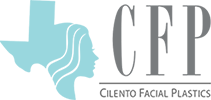
When many people hear the term “rhinoplasty,” they think of a cosmetic procedure to enhance the appearance of the nose. However, rhinoplasty isn’t solely about aesthetics—it can also play a critical role in improving nasal function and resolving breathing issues. For individuals who struggle with nasal congestion or difficulty breathing, functional rhinoplasty could be a life-changing solution. Let’s explore how rhinoplasty can address breathing problems and what you should know if you’re considering this option.
Understanding the Causes of Breathing Problems
Breathing issues often stem from structural abnormalities within the nose. One of the most common causes is a deviated nasal septum, which occurs when the wall dividing the nostrils is crooked or off-center. This misalignment can partially or completely obstruct airflow through one or both nostrils, leading to chronic nasal congestion or difficulty breathing.
Another common issue is nasal valve collapse, which involves the narrowing or weakening of the nasal valves, the narrowest part of the nasal airway. When these valves collapse, they can restrict airflow, especially during deep breaths. Enlarged turbinates—small structures inside the nose that warm and humidify the air—can also contribute to breathing problems when they become swollen or inflamed. Additionally, nasal trauma from an injury may disrupt the internal structure of the nose, causing functional issues.
How Rhinoplasty Can Improve Nasal Function
Functional rhinoplasty focuses on correcting these structural issues to restore proper nasal function. One of the primary ways this is achieved is by straightening the nasal septum through a procedure called septoplasty, which is often performed in conjunction with rhinoplasty. By aligning the septum, surgeons can create a clear and balanced pathway for airflow.
For those with nasal valve collapse, rhinoplasty may involve strengthening the nasal valves by grafting cartilage from another area of the body, such as the ear or rib. This reinforcement ensures the nasal passages remain open, even during deep inhalation. In cases where enlarged turbinates obstruct airflow, the surgeon may reduce their size or reposition them, allowing air to flow more freely. If breathing problems are caused by trauma, rhinoplasty can repair and realign the damaged structures to improve both appearance and function.
The Difference Between Functional and Cosmetic Rhinoplasty
While cosmetic rhinoplasty aims to enhance the appearance of the nose, functional rhinoplasty focuses on improving breathing. However, these two goals often overlap. Many patients choose to combine functional and cosmetic rhinoplasty, addressing both structural issues and aesthetic concerns in a single procedure. For example, someone with a deviated septum may also opt to refine the shape or size of their nose during surgery. This combined approach ensures that the nose not only works better but also complements the patient’s facial features.
Is Rhinoplasty Right for You?
If you frequently struggle with nasal congestion, difficulty breathing, or sleep disturbances caused by nasal obstruction, you may be a good candidate for functional rhinoplasty. People with a deviated septum, nasal valve collapse, or other structural issues can often benefit from this procedure. Additionally, individuals who have experienced nasal trauma may find that rhinoplasty not only improves their breathing but also restores their nose’s natural appearance.
It’s important to consult with an experienced facial plastic surgeon to determine whether rhinoplasty is the right option for you. A skilled surgeon will evaluate your nasal structure, discuss your symptoms, and recommend a personalized approach that addresses your unique concerns.
What to Expect During Recovery
Recovery from functional rhinoplasty typically takes one to two weeks, during which you may experience swelling, bruising, and some nasal congestion. These symptoms are normal and gradually subside as your nose heals. Many patients begin to notice improved airflow within the first few weeks, with continued improvements over the following months. By the end of the recovery period, you’ll not only experience easier breathing but also enjoy the long-lasting benefits of a well-functioning nose.
Choosing the Right Surgeon
The success of functional rhinoplasty depends largely on the expertise of the surgeon performing the procedure. At Cilento Facial Plastics, Dr. Cilento brings years of experience and a deep understanding of both cosmetic and functional rhinoplasty. His personalized approach ensures that every patient receives a solution tailored to their specific needs, whether their goal is improved breathing, enhanced aesthetics, or both.
If you’re struggling with breathing issues caused by structural nasal problems, functional rhinoplasty could be the answer you’ve been looking for. Contact Cilento Facial Plastics today to schedule a consultation and take the first step toward breathing freely and feeling your best.








